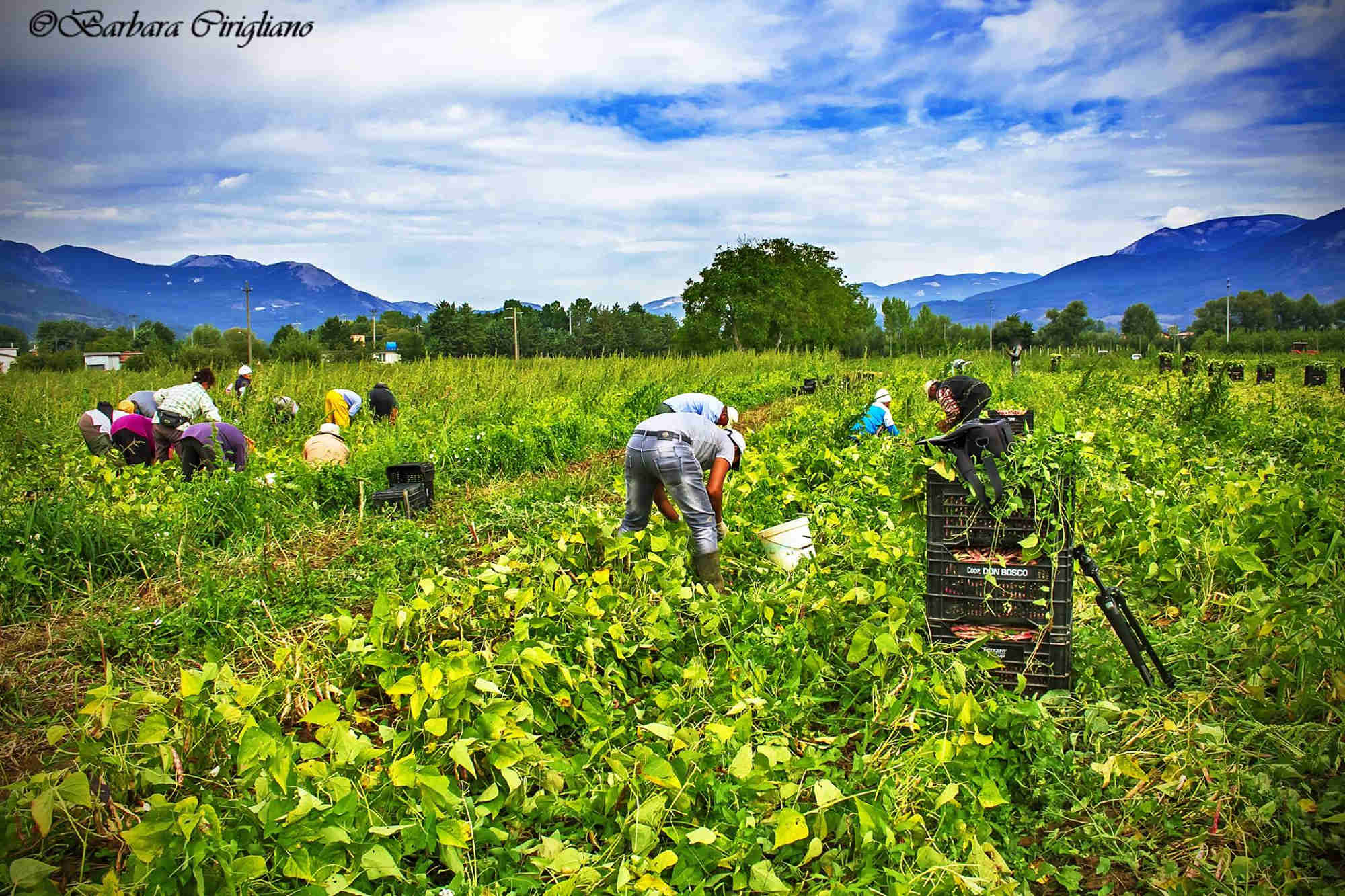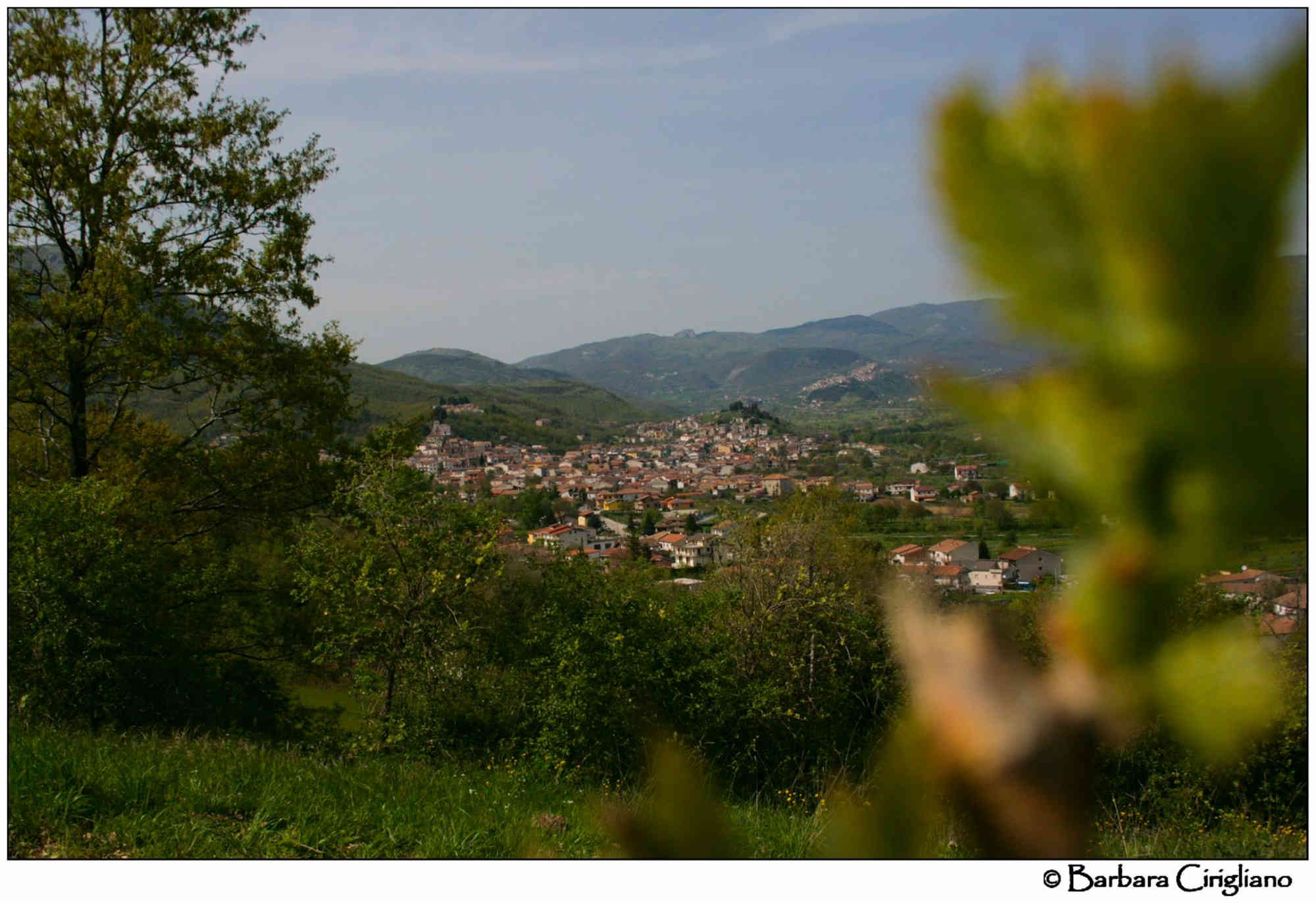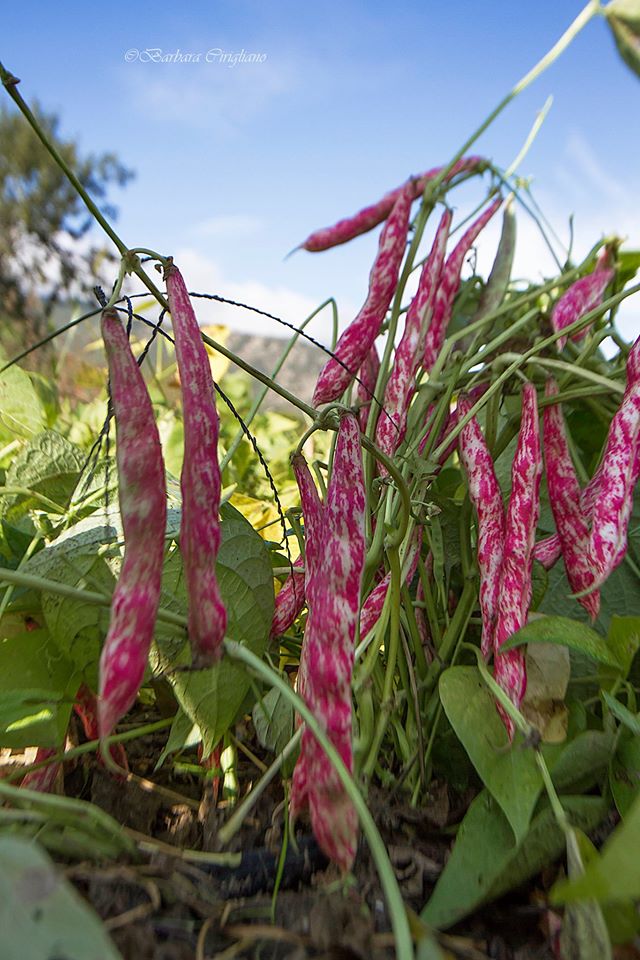
Sarconi beans PGI
Sarconi is a small town in Basilicata in the province of Potenza, became by-now famous because of the production of the highest quality beans. A true expression of biodiversity in terms of types, colors and organoleptic characteristics, there are in fact 20 ecotypes of Sarconi beans GPI.
Divided into two macro-categories, dwarf and climbing, the most common are certainly the “Ciuoti“, the “Verdolini” and the “Tabacchini” of the dwarf variety, the most particular even from an aesthetic point of view are the colorful “San Michele Rosso”,”Tuvagliedda Rossa”, “Tuvagliedda Scura” and “Nasieddo nero“, while the most valuable are probably the “Tondino Bianco“.
The special climatic conditions, together with the limited temperature range, prevent the transformation of sugars into starches, which then turns into a very pleasant sweet characteristic of Sarconi beans.
Each of the ecotypes has its own particular characteristic, which is added to those already mentioned: you just have to find out which one is best for you!
High area of Val d’Agri valley
One of the main characteristics of these particular legumes is due to the conformation of the land where they are grown, a non-calcareous soil, which allows water to pass through: thanks to this the beans have a very thin skin, they don’t require preventive soaking (called for this reason “at first water”) and cook in just 45 minutes, thus avoiding to lose all their precious organoleptic characteristics in prolonged cooking.
The Sarconi beans GPI area of origin includes 11 municipalities in the Upper Val d’Agri in Basilicata: Sarconi, Grumento, Moliterno, Marsico Nuovo, Marsicovetere, Montemurro, Paterno, San Martino d’Agri, Viggiano, Tramutola and Spinoso, all placed in the heart of the Appennino Lucano National Park.
The fertile soils, which extend above 600 m, the cool summers and the water abundance, combined with traditional cultivation techniques, combine to obtain an unmistakable product. The beans ecotypes – locally known by the names of ciuoto or queen bean, munachedda, marucchedda, tuvagliedde, tabacchini, verdolini, nasiedd, risi – represent for the high area of Val d’Agri valley the history, culture and traditions of a people proudly tied to its origins.

Sarconi beans: paupers dish
Beans are one of the most used ingredients of Italian cuisine and Made in Italy.
They are part of the Mediterranean diet, which is mainly based on pasta, legumes and vegetables. Beans, along with fruit and vegetables, have always been one of the key foods of Mediterranean cuisine. In addition to being very tasty, they are also healthy and an abundant source of protein for our body: this is why they are called “the meat of the poor”. In fact, in the Lucanian peasant culture, we find a cuisine poor in meat and fish: legumes, precisely because they are rich in proteins, often replace these foods.
In Italy the most common are cannellini and borlotti beans, while there are an infinite number of ecotypes of Sarconi beans: Cannellino, Verdolino, Ciuoto or Regina, Fasuli risi or Tondino nani, Maruchedda nera, Cannellino black or Cannellino rosso, Tabacchino, Canary, Red bean (or russu), Duce and many others.
Beans essential in the kitchen
Dried beans are a truly precious food for the health of our body.
They are rich in beneficial substances for our body, such as fiber, vitamins and minerals, and are also low in fat. Thanks to the numerous fibers contained, dried ones have a low glycemic index.
They are also rich in vegetable protein, containing almost twice as much as other foods such as cereals. In fact, they are also known to be a valid substitute for meat in vegan and vegetarian diets.
In Italy there are many variations of this product: they all are made in Italy beans, coming from Italian producers; In the Val d’Agri in Lucania, Sarconi beans GPI are grown above all, appreciated throughout Italy and the world for their softness and the fact that they never overcook!


